Blog
Keep up to date with the happenings at Machines Plus
From helpful tips and hints to make your business as successful as possible to announcements on new printers being launched, we share it all!
Machines Plus

By Gus Altmann
•
25 Feb, 2021
Many of our customers’ common questions revolve around copyright, especially when it comes to images that have been downloaded from the internet and obtained from stock photo services (such as iStock Photo, Adobe Stock, Shutterstock and so on). Some images are watermarked, which clearly indicates that the owner does not want their artwork used without permission, but others may have no markings at all. It is your responsibility to find out if the images you would like to use are covered by copyright. There’s no grey area when it comes to the law, so ensure that you have protected yourself against possible infringement. Stock Images Many people believe that paying the download or subscription fee when using a stock image library entitles them to unlimited usage of the image. You might be surprised to learn that this isn’t necessarily the case. Most images that you get from stock services come with a standard license, which entitles the downloader to a certain number of uses and views on social media, mobile advertising or email marketing (to name a few). It’s important to note, however, that a standard license doesn’t entitle you to use the image on merchandise or products that you intend to sell or profit from. If you want to use the image on printed or promotional items that you intend to sell, most stock services will be able to provide you with an extended license - but this will be at an additional cost. I Won’t Get Caught Thanks to the internet, an image owner doesn’t need to randomly stumble across your website to discover that someone has used their work illegally. Tools like Google Image Search allow literally anyone to perform a reverse image search, which helps owners find out where their images are being used. If you’re using copyrighted images without permission, you’re breaking the law and the owner can take legal action against you - even if you remove the image. Don’t fall into the trap of thinking that you’re just a little player and that large brands won’t bother - we’ve heard of plenty of small businesses that have received cease and desist letters, so it does happen and can very easily happen to you.
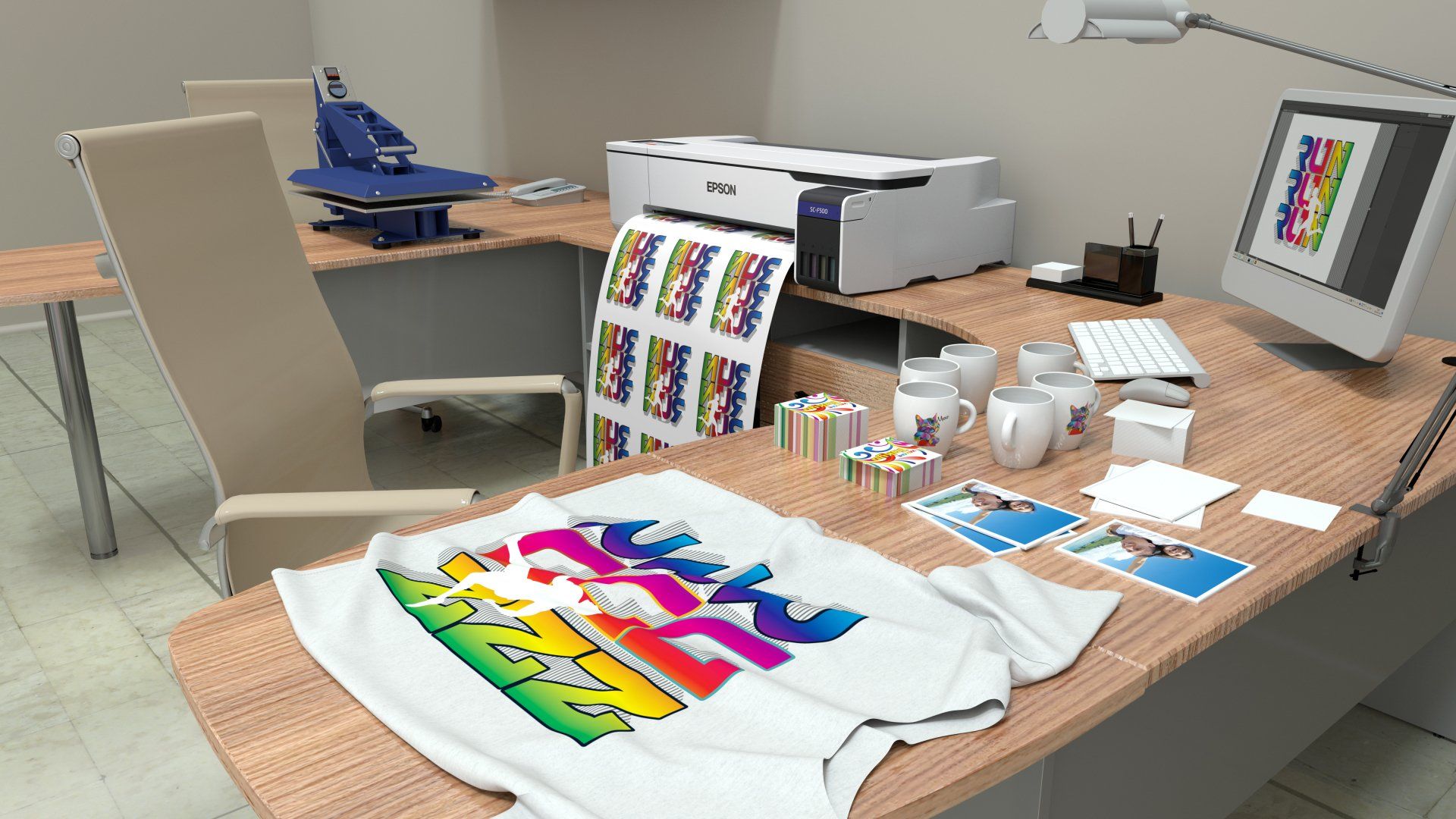
By Gus Altmann
•
11 Sep, 2020
Look after your printer A printer that isn’t in perfect working condition will produce poor quality prints. So ensure that you store and operate your machine, inks and paper within the recommended environment. Always leave your printer powered on when not in use and perform maintenance as required. Come to grips with your graphics application Knowing how to manipulate an image within your graphics application - such as resizing or enhancing its overall quality - is key to producing a quality finished product. There are many courses and training resources available to help teach you the basics of most popular graphics applications. Use impressive images Keep in mind that your printer will only reproduce your artwork, it won’t improve it - if it starts out poor quality, it’s still going to be poor quality once printed. This is why you should always use high resolution images with great clarity and vibrant colours to ensure the best possible results. Know your time, temperature and pressure Ensure that you know the right time, temperature and pressure settings for your heat press and the substrates you’re using. Every substrate brand requires specific settings, and these may vary from press to press. It’s also a good idea to check the calibration of your press every now and then. Choose suitable printer settings Using the correct colour management software will help to streamline the printing process, but there are still some settings that need to be selected to ensure that everything runs smoothly. Keep in mind that these settings will vary depending on your selected graphics application. Monitor your ink cartridges Remember that all ink cartridges have a shelf-life - and for good reason. Over time, the chemical makeup of the ink can change, which can affect the colour output and even has the potential to damage your printer. There is an expiry date printed on the cartridges, so be sure to monitor them. Arrange your workspace Sublimation setups can vary in size from around A4 to over 3 metres wide, so plan your workspace carefully. Keep your printer at least 1 metre away from heat sources and ensure that the room is kept between 15 and 25°C. You’ll also need a preparation area to apply transfers and a cooling area. Whether you’re new to dye sublimation or just looking to hone your skills a little, we hope that you find our above list of tips helpful in getting the best success for your business. Need help choosing a printer or consumables? Machines Plus is here to help.
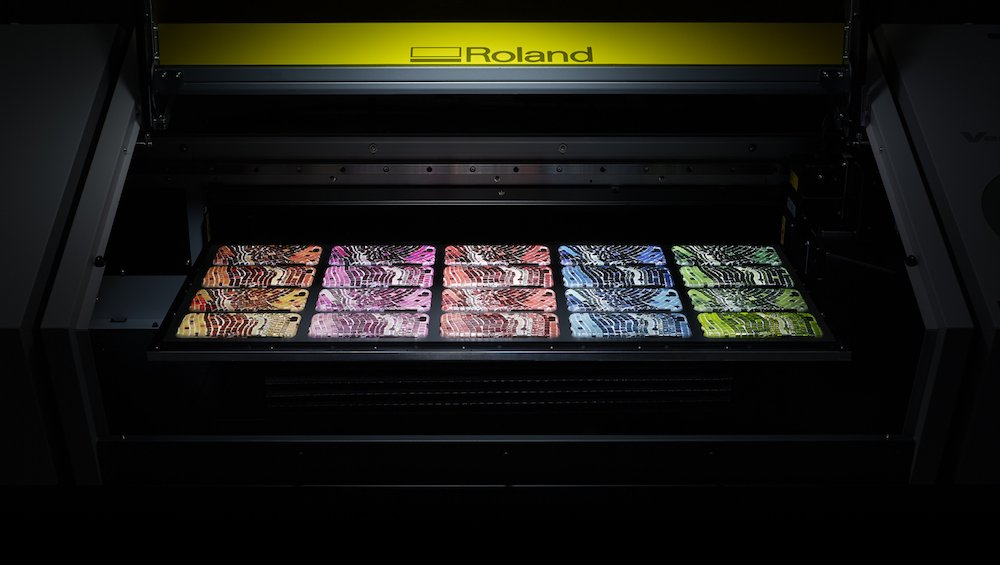
By Gus Altmann
•
01 Sep, 2020
In this blog, we’ve taken a closer look at why humidity is important and what sort of effect it can have on our print rooms and final products. Are you aware of the humidity in your environment? Low and high humidity So, how does relative humidity differ from actual or absolute humidity? In layman’s terms, it is the measure of water vapor comparative (or relative) to the temperature of the air. Relative humidity is most often what’s cited in weather forecasts, as it affects the “feels like” temperature. To get a bit more technical, it’s expressed as the amount of water vapor in the air as a percentage of the total amount that could be held at its current temperature. Warm air can hold far more moisture than cold air, meaning that the relative humidity of cold air is far higher than that of warm air (if their absolute humidity levels were equal). Humidity and your print room Humidity can pose quite the challenge when it comes to printing, as we want to ensure that our staff are comfortable but it can have various effects on our setup (ie printers, papers and ink). Some common problems that occur in print rooms as a result of humidity include printheads drying out during a print cycle (if the room is too dry) and cockling of the paper which can cause inconsistent prints (if there’s too much moisture in the air). To remedy this challenge, many people turn to humidifiers. The use of such devices may increase the humidity in the room to more acceptable levels (between 45 and 85%), but you will find that most printer setups work best when the environment is closer to the top end of this range. You should also take note of what your printer manufacturer recommends as the acceptable RH levels. Epson recommends an environment between 40% and 60% RH for their dye sublimation printers. Roland recommends an environment between 20% and 80% RH for their solvent printers. Whilst a good quality humidifier will set you back around $700, when you compare this to the costs of replacing your printheads, dried up ink cartridges, damaged paper and lost production time it quickly becomes clear that investing in one is the safer option. If you have any questions about the correct humidity for your machine or controlling the environment in your print room, make sure that you get in touch with the team at Machines Plus.

By Gus Altmann
•
27 May, 2020
Update your website (or create one if you don’t currently have one) How long has it been since you did any updates to your website? Now is the perfect time to sit down and really think about what you want your online presence to look like. If you’re in the small percentage of businesses that doesn’t have a website, there is no better time to actually put one together. We understand that you may not have the money for a custom design at the moment - even a free template is better than nothing. Get a handle on your site’s search engine optimisation (SEO), which determines how it ranks in search engine results. Get some new product photography done and update your site’s images or take it a step further and look into video. Give your site’s look and feel a bit of a refresh - are there better ways of laying out your content, or could your text do with a rewrite? Create a marketing plan It’s difficult to draw business in if potential customers don’t know you exist, so it’s definitely worth spending some time on putting together a marketing plan for your business. You could focus on how to drum up business whilst coronavirus restrictions are still in place, or you could look to the future and plan for when life is starting to get back to normal. If you have the time and motivation, we recommend planning for both! Let potential customers know that you’re still open; many people are under the assumption that a lot of businesses have closed. Now is a good time to focus on more “feel good” messages in your marketing; why not share snapshots of your life (kids, pets, etc)? Look to special occasions or events occurring in the future that could be relevant to you - how can you use them to bring business in? Get all that testing out of the way Why not finally try out that new product you’ve had your eye on (such as a pretreat for your DTG printer)? Or try your hand at a printing/decorating technique that you’re not familiar with? Or do some testing on a new garment range or type of fabric that you’ve been getting a lot of enquiries about? Many businesses often find they’re too busy to perform any sort of trials, particularly as it takes time to finesse and get the processes right. Update your product listings If you offer a range of ready made products, now is the ideal time to go through them and make sure that they represent the very best that your business has to offer. Remove products that aren’t really selling or think about ways you could alter them in order to generate interest again. This is also a good time to look into some exciting new products that you could add to your store and that are more reflective of the direction you want to go. Upskill or undertake some training Now is also a great time to further your skills, so that when life does start to look more normal your business will be able to tackle it by the horns. This could be directly related to your industry (so learning how to use a new machine or even a new garment decoration technology all together) or it could be supplementary to your business (so learning a bit more about marketing, social media, enewsletters and so on). Sign up to an online short course, many of which allow you to work at your own pace and at a time that is convenient for you. Participate in webinars and online classrooms; many printer manufacturers are offering these resources during coronavirus. Sign up to a university degree (if you’re okay with it taking a few years and costing more to obtain a qualification). Got any questions or concerns about your garment decoration business or printer during this difficult time? Make sure you get in touch with the team at Machines Plus - we’re more than happy to help in any way we can.

By Gus Altmann
•
13 Apr, 2020
If you have a garment decoration business - using either direct to garment printing (such as the Epson SC-F2160 or the Ricoh Ri 100) or print/cut technology (such as the Roland GS-24 or BN-20) - and you work from home, you have an advantage in that you can continue working when other businesses are forced to shut their doors. It’s time to think outside the box and come up with ideas that could see you still earning an income. Tap into a niche you haven't previously As with most small businesses, you probably have a niche market that you market to or a niche product offering. If you've seen a downturn in sales and enquiries, your niche could be one of those suffering in the current climate. Why not consider tapping into a niche that's outside your usual? If you normally create sporting uniforms and merchandise but aren't getting any sales because most sports are cancelled, why not move into children's wear or giftware? This change doesn't have to be permanent - once restrictions start to lift and life goes back to normal, you can return to your bread and butter niche. Or you might find a new market that you absolutely love. Special events are just around the corner Whilst much of the country is avoiding social gatherings, remember that the world doesn’t just stop turning - holidays and special events are still happening. We've just celebrated Easter and Mother's Day is coming up in a few weeks. On top of this, people are still celebrating birthdays and having new babies. We may not be able to celebrate these milestones with our friends and extended family, but we can still let them know that we're thinking about them by having a gift shipped direct to their door. Think about products that you can offer to help brighten somebody’s day. From personalised t-shirts and hoodies to customised goodie bags and mugs, there are plenty of items that people will still use and appreciate. Children need to be entertained If you have kids, you’ll be well aware that they can become bored easily and that activities don't hold their attention for long. With many of us having to stay at home indefinitely - and over the school holidays no less - boredom is something that parents are definitely looking to combat. Is there a way that your business could answer this need? These may not be products that you usually offer, but they could definitely help to bring in some income. Why not print an outline on a t-shirt - kids can use waterbased markers to colour them in again and again. Or customise some blocks with vinyl letter cut outs - if kids find learning enjoyable, they’ll return to the toy over and over again. People need a good laugh Have you ever heard the saying 'if you don't laugh, you'll cry'? For many people, this definitely rings true at the moment. Why not try to inject some humour into the situation by offering a line of Coronavirus themed products? From t-shirts emblazoned with slogans about surviving COVID-19 to mugs telling the world that social distancing is how you lived before all this, there are plenty of ways to make people laugh and relate. Just be careful that you’re not being insensitive to the plight of others - remember that, for some of the population, this is quite a serious illness and that hundreds of people all over the world have already lost their lives to it. With more of the country shutting down every day, there is no reason that you should have to close the doors to your garment decorating business too. Most people are choosing to shop online, as it prevents unnecessary contact with others, so your little online business is the perfect means to keep some money rolling in during these tough times. Keeping your business afloat, however, may require some thinking outside the box.

By Gus Altmann
•
01 Apr, 2020
Whilst our direct to garment printers are a fantastic way to make some extra cash, they can also be costly to run - it’s completely understandable that some business owners are wondering whether they should put their printers into storage mode or not. Use our list of pros and cons to help you answer this question. Pros Avoids expensive repairs Turning your printer off or leaving it on without print jobs can lead to all sorts of issues, from irreparable damage to your printhead to ink drying in the lines and completely blocking them. These issues can cost thousands of dollars to fix - money that you may not have after months of not working. Even if you do have access to the money, you may not be able to get a technician out straight away, which causes even more delays. Keeps your warranty valid Have you ever read the fine print on your printer’s warranty? As the owner, you’re actually required to do everything in your power to keep the printer working at its optimum. You will find that damage caused by improperly hibernating your machine or failing to hibernate it at all is not covered by the warranty. This means that you’ll need to pay for any repairs or replacements, which gets costly quickly. Get back to printing when you’re ready Putting your printer into storage mode ensures that it will be ready for you once you’re ready to get back to printing - all you’ll need to do is put some ink cartridges in and ink up the machine. By avoiding the need for repairs and maintenance, you’ll be on the front foot when it comes to getting your business back up and running - you won’t be dictated by the technician’s availability or the delivery of parts. Cons You can’t take on any orders Whilst you may not be getting many orders at the present time, putting your printer into hibernation means that you won’t be able to complete any jobs that come your way. There are a couple of ways around this - you could have everything ready to shut down your machine and just wait until you’re getting no enquiries (or we go into a full lockdown), or you could find someone else to help with your printing. You might be wasting ink When you’ve only just placed cartridges into your printer, the idea of flushing the lines and wasting all that precious ink can be difficult to swallow. Keep in mind that if the cartridges are around 80% full or more, you should be able to reuse them to ink up your machine. If they’re emptier than this, you could consider printing until the ink is at a level that you’re comfortable with disposing of and then hibernating your machine. You’re paying for a printer that you aren’t using At this stage, many owners are expected to continue making repayments on their printers, so it’s understandable that you may not want to pay for a machine that you’re not using. Some lenders are deferring payments for people who are experiencing hardship as a result of Covid-19 - get in touch with your financing company if you need to hibernate your machine to see how they can help. If you have decided that now is not the right time to put your printer into storage mode, it never hurts to be prepared. With the situation changing on an almost daily basis and new restrictions being enforced all the time, it’s hard to know what we’ll be doing tomorrow let alone next week. By having a complete set of cleaning cartridges on hand, you can ensure that you’re ready to hibernate your printer at a moment's notice.
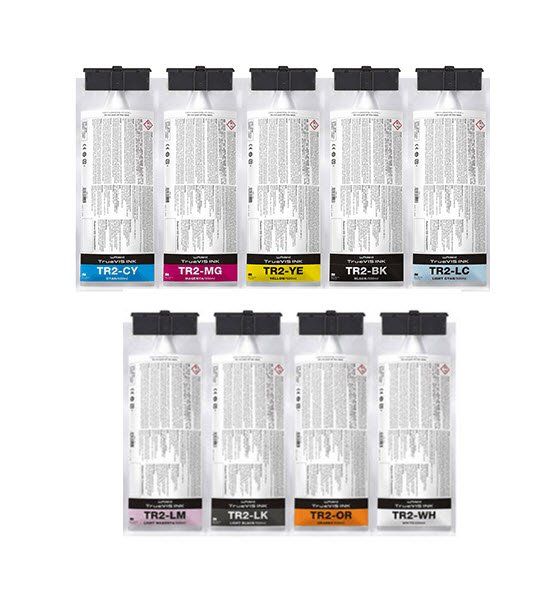
By Gus Altmann
•
12 Mar, 2020
If you are a current user of the original VG or SG generation printer/cutters, you’ll need to make sure that you’ve converted your machine by then if you want to ensure that you can continue using it (plus take advantage of a host of new features). But what are the main reasons that you should make the switch sooner rather than later? Print, Finish & Install Graphics on the Same Day Are customers’ demands for faster turnaround times something that has always gotten you frustrated? With the new TR2 ink, you’ll be able to satisfy their demands without compromising on the quality of the finished product - prints will be ready to laminate and then immediately finish after only 6 hours. New Certifications from Industry-Leading Media Manufacturers The VG Series using new TR2 ink is certified for long-lasting results by the 3M™ MCS™ Warranty, whilst both the VG and SG Series using TR2 ink are certified by the Avery Dennison ICS™ Performance Guarantee (which provides protection for up to 4 years outdoor durability and up to 7 years indoor). Produce Stunning Quality, Colour-Accurate Prints The new ‘True Rich Color’ preset allows you to take full advantage of both series’ great colour reproduction capability, as well as the TR2 ink’s wide colour gamut. There’s no need to compromise on colour vibrancy or accuracy - deliver vivid output whilst maintaining neutral greys, natural skin tones and smooth gradations. Significantly Reduce Ink Consumption Thanks to newly developed ink technology, the use of TR2 ink can actually significantly reduce the amount of ink used when performing printer maintenance. This not only means there’s more ink available for your paid jobs, you will find that you won’t have to replace the cartridges as often. Produce the Most Demanding Applications TR2 ink offers outstanding performance for a variety of indoor and outdoor graphics, including some of the most demanding applications where stretch, adhesion and rub resistance are imperative (such as car wraps). It offers up to 200% stretch, as well as delivers unmatched washability.

By Gus Altmann
•
25 Feb, 2020
Whilst we want you to take on jobs and be excited about your new business venture - we’d love for you to have job requests coming out your ears! - we never recommend taking on jobs before the printer has been delivered for a few good reasons: You need to be trained in how the printer is used Even if you have experience with similar models, you will still require some training in how the printer functions before you’ll be ready to tackle a job - it’s very rarely as simple as plugging it in and pressing go. Training is even more important if this is your first time using such equipment. Your installer will have a far easier time training you if you’re prepared to take your time and utilise imagery that they are familiar with (rather than trying to tackle your paid job that they have never seen before and is not their responsibility). You need to practice to get your procedures right There’s a reason why we often give away a care package of garments with printer purchases - you should practice and get your procedures right before you even think about taking on paid work. Pretreating, for example, requires some finesse to get right and can result in problems with the print when done incorrectly. Plus, your customers are expecting a certain level of quality in the finished product. Failure to provide them with this can lead to complaints, which can have a negative impact on your new business. There may be an issue with the printer or its setup Keep in mind that your printer often requires a lot of different components to get up and running, in particular things like power cables and ink. What are you going to do if your printer is delivered and one of these crucial components is missing? Whilst installers generally carry spare ink with them, cables are another story. You might also encounter an issue with the printer’s setup - the software may not be compatible with your computer, for example, or there may be a defect with the hardware that was not immediately visible. These things can take time to rectify. There may be delays due to stock levels or shipping It’s important to remember that dealers very rarely have printers in stock; instead, they are shipped out to you directly from the manufacturer. If a lot of people have placed orders around the same time, this can cause delays on the manufacturer’s end as they manage stock levels and work through the backlog. Couriers and postal companies may also cause delays, particularly if they somehow misplace your package. Things like bushfires and floods, which are completely beyond everyone’s control, can also cause shipping delays. If you are in the market for a new printer, from direct to garment (like the Epson SC-F2160 or the Ricoh Ri 100) to print/cut (like the Roland DG BN-20 or SG2-540), we really hope that you’ll think twice about accepting jobs before it has been delivered. At the end of the day, isn’t it best to lower your stress levels and ensure that you’re fully confident in using the machine before you start taking on paid work?
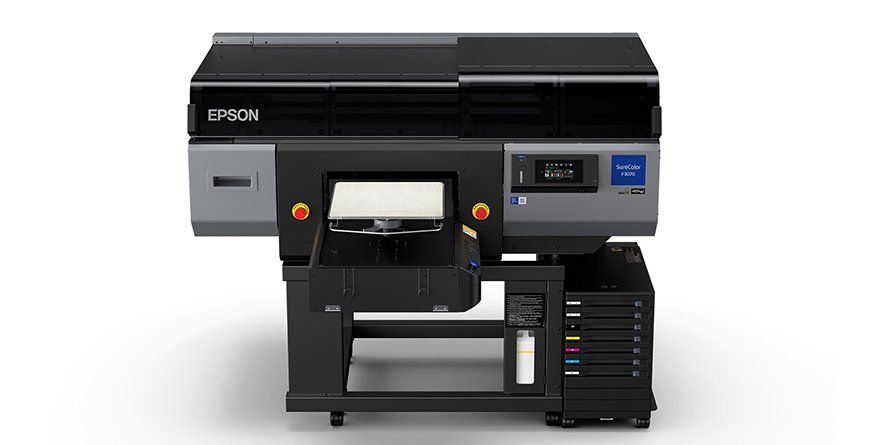
By Gus Altmann
•
30 Jan, 2020
The machine has been designed specifically for mid-to-large size garment printers who are looking for high-production, cost-effective equipment. Designed to provide a low total cost of ownership (TCO) as well as reliability for exceptional performance and savings in high-production environments, the SC-F3060 offers the ability to produce a full-size t-shirt in around a minute. Users will be able to print literally hundreds of shirts every day. This is Epson’s first direct to garment printer to utilise dual printhead technology and a bulk ink pack system, providing users with an unusually low ink cost plus minimised waste (when compared with Epson cartridge systems). The machine is capable of housing 1.5 litres of each colour (CMYK) and 3 litres of white, so you won’t need to refill the machine as often as well as experiencing lower operating costs. An ideal choice for printing on a variety of fabrics - including cotton, linen and rayon - the F3060 has been designed to meet the increasing market demand for unique clothing driven by the millennial population. Some of the other features you can expect to see include: PrecisionCore printhead technology (dual 10-channel printheads with 16,000 nozzles delivering industrial quality output at impressive speeds); Bulk ink system (replaceable bulk ink packs for less frequent refilling and lower costs compared to cartridge systems); High quality DTG printing (Epson UltraChrome DG inks are durable, vibrant and safe with outstanding colour performance); Automatic printhead adjustment (optimised for garment thickness for improved print quality without user intervention); Low TCO (low maintenance time and cost thanks to dedicated cleaning solution channels and fabric head wiper system); Fast loading for more productivity (the all new, easy to use quick-load platen reduces traditional hoop platen load times); Intuitive, easy to learn workflow (the updated Epson Garment Creator Software includes a cost estimator, text tools, hot folders and automation SDK); and Scale seamlessly (scale production capability with additional printers thanks to its easily re-positionable compact design). Details on pricing and availability of the Epson SureColour F3060 are set to be announced after the Showcase, however we don’t expect to see this machine available on our shores until mid year. If you think this printer could be the perfect addition to your business for 2020 and would like to see it in action, register to attend the Productivity & Efficiency Showcase on either the 20th or the 21st of February in Brunswick East here or get in touch with the Machines Plus team on 1300 167 587.
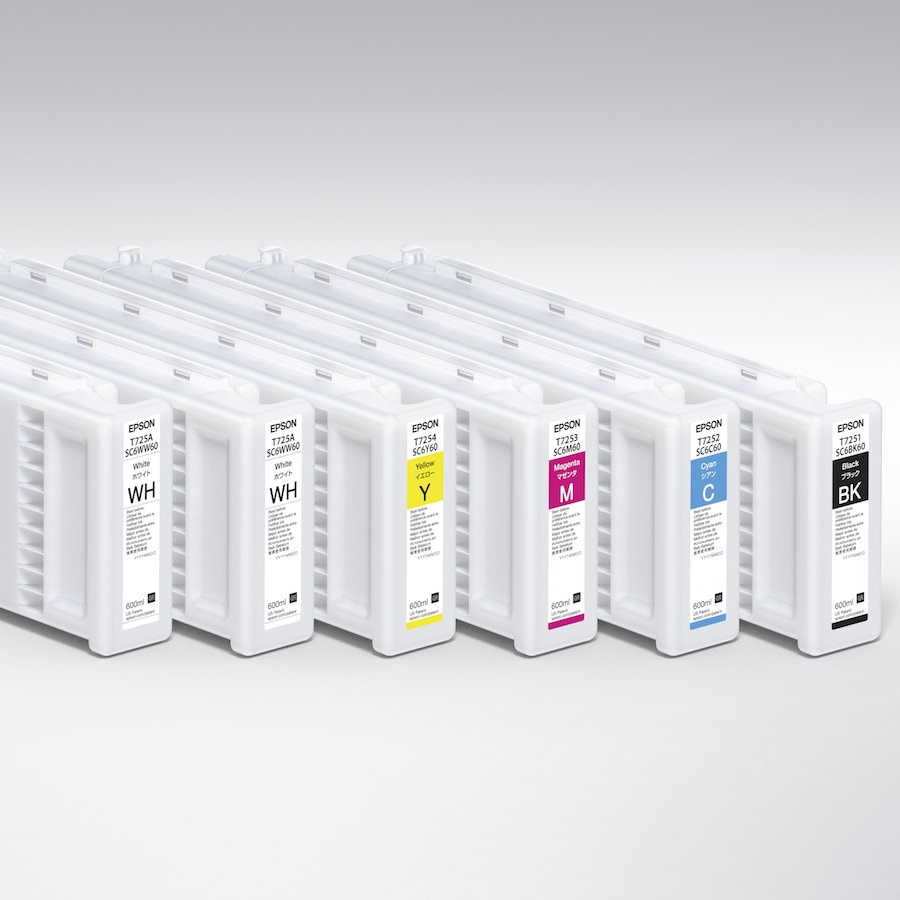
By Gus Altmann
•
03 Dec, 2019
So what is the correct advice to follow? If you run an Epson SureColor F2160 (or F2000), having spare ink and cleaning cartridges on the shelf is always the way to go. And there is no risk of it expiring thanks to the long shelf life of Epson DG UltraChrome inks. What is an expiry date? An expiry date is a date that manufacturers place on ink cartridges to tell us how long the ink will work as it’s intended. This means that all of the ingredients and chemicals in the ink will flow correctly through your printer’s tubes, filters and printheads. The ink will also do the job it’s intended to do once it hits the substrate. Why shouldn’t I ignore expiry dates? Using ink that has passed it’s expiry can cause countless problems with your DTG printer. Some of these problems may not be immediately evident, but your printer could sustain internal damage that may impact its performance in the future. An ingredient that is added to help the ink flow through the printhead, for example, could separate from the solution and cause particles to start building up inside it. Once the buildup is great enough, it will eventually cause your printhead to fail. Beyond the problems caused with your printer, using ink that has passed it’s expiry can also result in issues with your prints. Some of the pigment may disappear from the solution, for example, causing variations in colour to occur. Your prints won’t turn out as expected, which can result in some very unhappy clients. It’s also crucial to note that, in most cases, using expired ink in your machine will void your manufacturer’s warranty. Why keep ink on the shelf then? Whilst using expired ink can be hugely detrimental to your printer, letting the ink cartridges run completely dry can be even more so. Your printer requires ink in the lines to keep everything running smoothly and prevent damage to its fragile parts, like the printhead. Letting the ink run down completely and then not replacing it immediately can cause whatever solution remains in the tubes, filters and printhead to dry, which leads to all sorts of problems when you try to start up your machine again. Plus, if you’re in the middle of a job, you’ll be forced to cease printing until you’re able to have some new cartridges delivered. We regularly receive calls from customers needing ink as soon as possible because their printer has run out and they have jobs to complete. This can be extra stressful for them if they have missed postal cutoff times or if their ink has run out on a Friday. By keeping a spare set of cartridges on the shelf, you will be prepared for times when your printer runs low on ink. This also decreases the possibility of disruptions to your workflow, particularly during the Christmas period when many suppliers are closed or in the case of a natural disaster (such as bushfires and floods) when you may not have access to ink as quickly as usual.
© 2021 COPYRIGHT MACHINES PLUS | Terms and Conditions
| Privacy Policy
| Returns Policy
| Service Agreement
